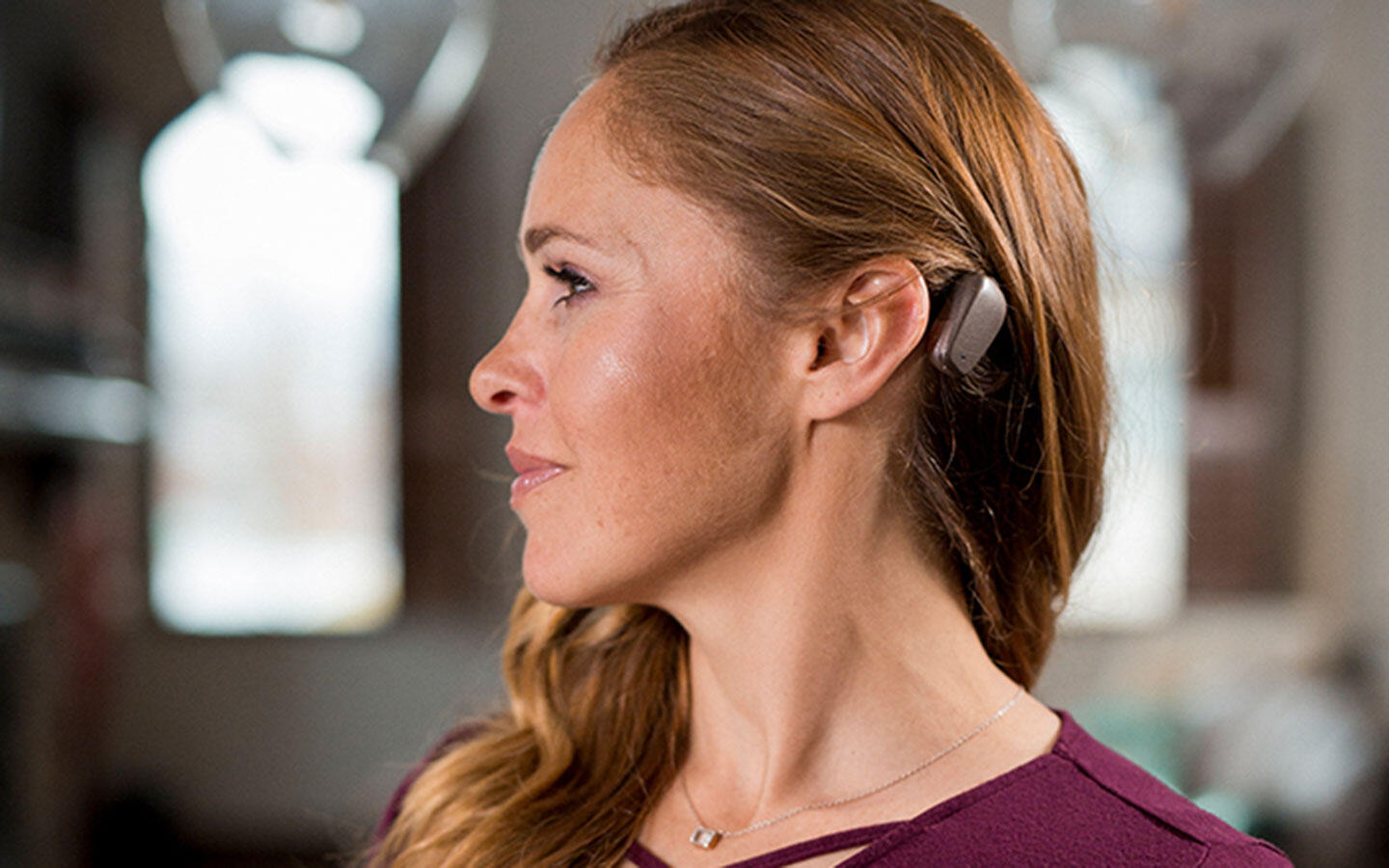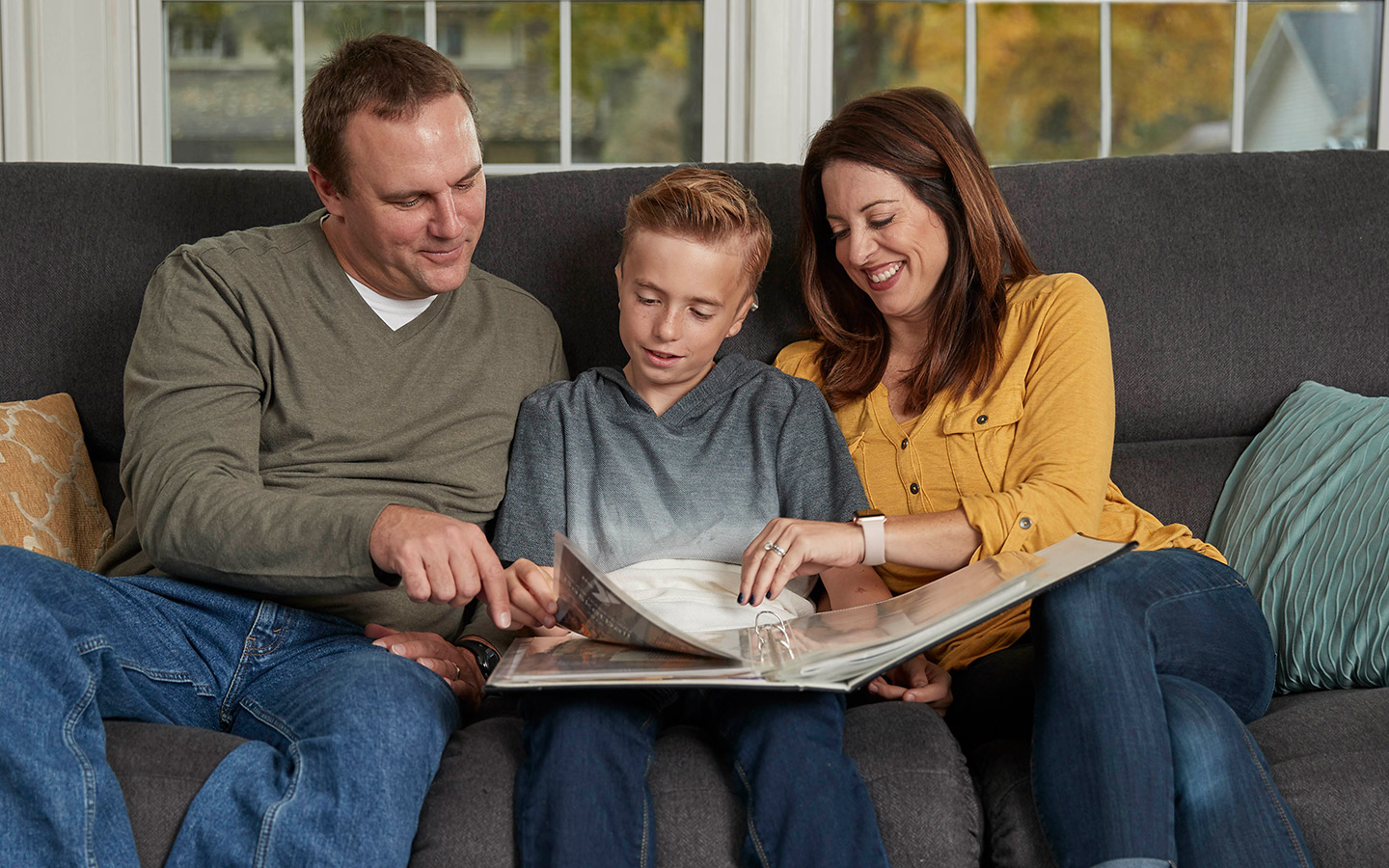Fitting your bone conduction device
The moment you’ve been waiting for is coming. Here’s a list of questions to ask your hearing health professional so you’ll know what to expect.

What you'll find on this page
- Questions to ask your hearing care professional.
- What to expect on fitting day and beyond.
It's normal to feel nervous and excited as you get ready for your bone conduction solution fitting.
At your first appointment, your hearing health professional will fit your sound processor and program it for you.
Here’s a list of questions to ask your hearing health professional to help you know what to expect.
- What happens during my appointment?
- What will it feel like when fitting my sound processor?
- Will I hear right away?
- How will it sound? Will it sound just like I remembered, or will it sound mechanical or high-pitched?
- How long will it take for me to adjust to the new sound?
- How do I put on my sound processor?
- How does my sound processor and implant work?
- What tips do you have for using my new sound processor?
- How often will I need to charge or change the batteries?
- How do I store and care for my device?
- What resources and activities do you recommend for rehabilitation?
- What happens if my hearing changes over time?
- Is there a network of hearing implant recipients in our community? Can you put me in touch with them?
- How often should I see the hearing health professional for follow-ups?
What usually happens on fitting day?
Your hearing health professional will fit and program your sound processor a few weeks after your surgery. It’s typically a simple and quick process.
They’ll connect your sound processor to the programming software and place the sound processor on your head. They'll then perform a feedback test, and you can hear sound through the sound processor for the first time.
Your hearing health professional will program your sound processor to meet your individual needs. They can set specific listening programs for different hearing situations, such as quiet or noisy environments.
Your new hearing device is then ready to go.
What to expect after your sound processor is turned on
When your sound processor is turned on, all the new sounds can seem a little overwhelming for you at first – it will take some time to adjust and get used to the new sounds.
Initially, your hearing may feel different. Generally, within a few weeks of taking in all sorts of different sounds, the brain will adapt and your hearing will start to feel more natural.
Follow the guidelines for care and maintenance for your device. We offer many how-to videos, and our customer service team can help answer any questions you might have.
Disclaimer
Please seek advice from your health professional about treatments for hearing loss. Outcomes may vary, and your health professional will advise you about the factors which could affect your outcome. Always follow the directions for use. Not all products are available in all countries. Please contact your local Cochlear representative for product information.
For a full list of Cochlear’s trademarks, please visit our Terms of Use page.
Views expressed are those of the individual. Consult your health professional to determine if you are a candidate for Cochlear technology.
In Australia, Cochlear™ Nucleus® implant systems are intended for the treatment of moderately severe to profound hearing loss.
In Australia, Baha® bone conduction implant systems are intended for the treatment of moderate to profound hearing loss.
In Australia, the Cochlear™ Osia® System is indicated for patients with conductive, mixed hearing loss and single-sided sensorineural deafness (SSD) aged 5 years and above with up to 55 decibels sensorineural hearing loss. Patients should have sufficient bone quality and quantity to support successful implant placement. Surgery is required to use this product. Any surgical procedure carries risk.
For Cochlear™ Nucleus®, Osia® and Baha® systems: This product is not available for purchase by the general public. For information on funding and reimbursement please contact your health care professional.
Any testimonial featured on this website is intended for an Australian audience only.






